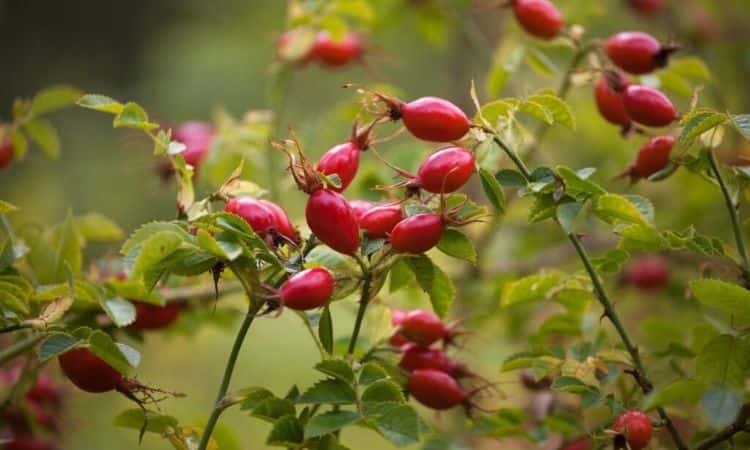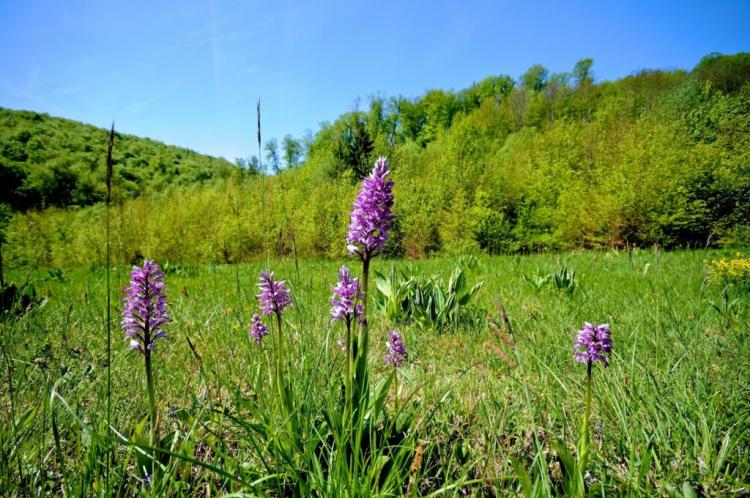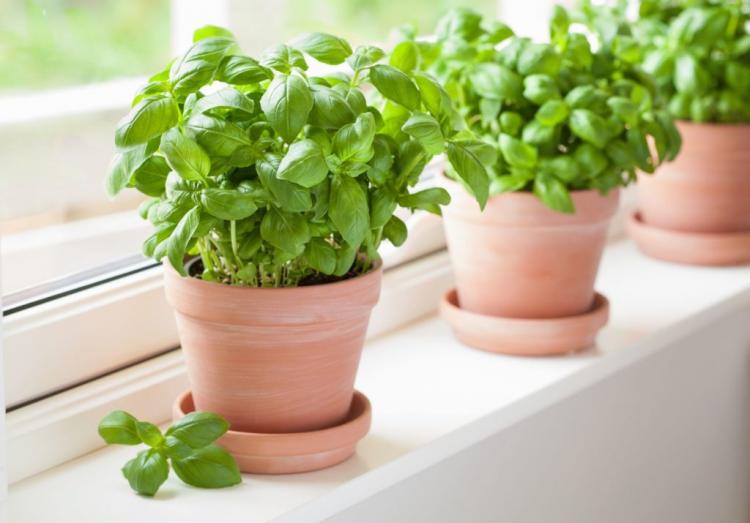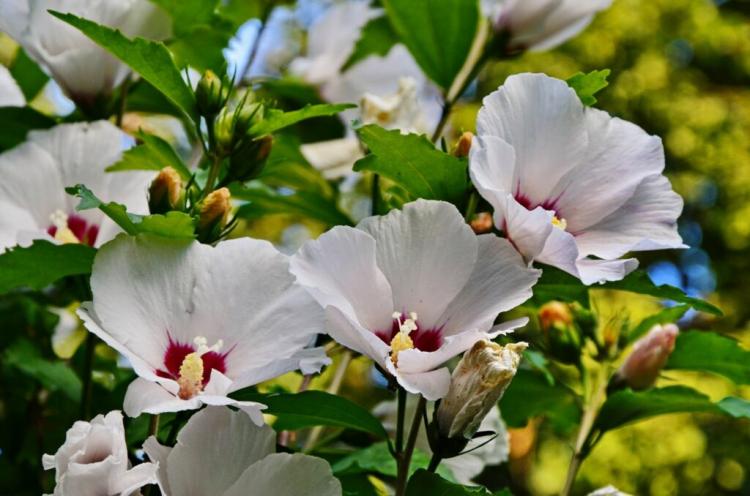Rose Hip: 7 Questions And Answers About The Fruit Of The Rose Hep Bush
How can you harvest rose hips and are the fruits of the wild rose actually poisonous or even healthy? We answer 7 questions about the rose hip. When the sky is gray and gloomy and the trees have already dropped their leaves, then the hour of rose hips has come. The bright red fruits bring color to gardens and bushes.
Even under the white of the first snow, the rose hips shine out unperturbed. At the same time, fruits are not only beautiful to look at, but also bring a lot of useful things.
Where do rose hips come from?
Table of Contents
Rose hips have almost something folk about them. For hundreds of years and over many generations, people have discovered the positive properties of the red fruit bodies for themselves.
Actually, rose hips are aggregate nut fruits, as can be easily recognized by the many small hairy nutlets inside the flesh of the fruit. The shiny red fruits are formed by roses.
However, not all roses form rose hips, as there are also sterile rose varieties that cannot form fruiting bodies. On the other hand, the rose hips of wild roses such as dog rose (Rosa canina) are particularly distinctive. These are ideal for harvesting and further processing.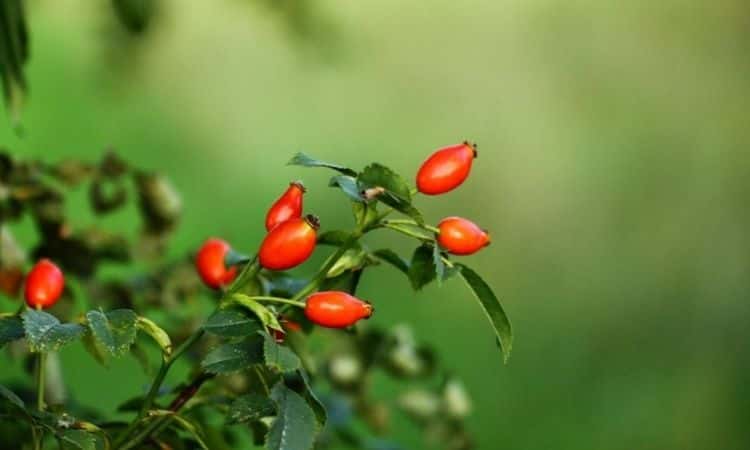
Can rose hips be grown in the garden?
Of course, you can grow rose hips in your own garden. The roses with the most beautiful fruits – the wild or hedge roses – are particularly suitable for rosehip hedges or single shrubs as eye-catchers in the garden.
While in autumn the romantic blossoms with their beguiling fragrance enchant the garden, the red shining rose hips transform your garden into a true bird paradise in winter. Wild roses are an important habitat and food source for numerous insects and birds.
In addition, wild roses are very frugal and adaptable, they are also content with dry and nutrient-poor soils. Therefore, in the landscape, they are often found along paths and preferably in sun-exposed places. Only on wet soils, wild roses can not be observed satisfactory growth.
When to collect the fruits of the wild rose?
Rosehips ripen in autumn, so harvesting is possible in principle from September. At this time of year, however, rose hips are often still hard, if not unripe. After the first frost, however, the fruit softens and the skin begins to glaze over somewhat.
It gives slightly when you press on it. Now is the optimal time to harvest, because, in relation to the hard rose hips, these soft specimens are much sweeter and also easier to process.
Theoretically, the fruits can now be collected throughout the winter, but over time the valuable vitamin C content of the pulp decreases. On dry days, the vitamin C content should be at its highest.
How to harvest rose hips properly?
Harvesting rose hips is not complicated at all. Perhaps you have already as a child on long walks from time to time nibbled a rosehip directly from the bush?
In doing so, you probably simply plucked the rosehip from the bush and thus already revealed the entire secret of harvesting rose hips. So, harvesting the red fruit is real manual labor. However, be careful and wear gloves for harvesting, so you do not prick yourself on the sharp thorns of roses.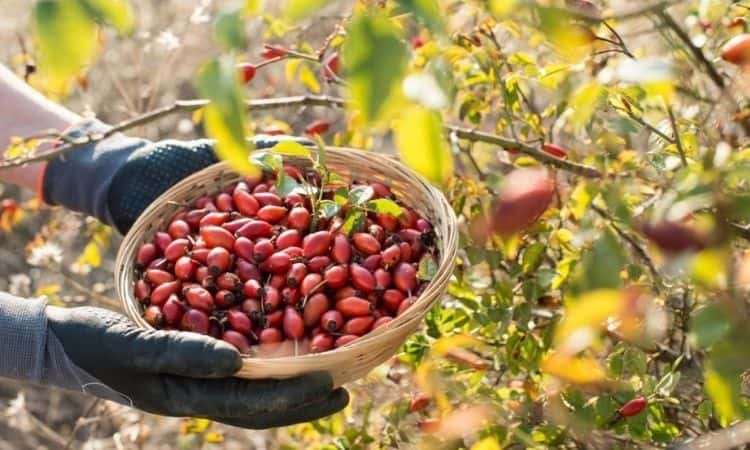
Are rose hips poisonous or edible?
Rose hips are not only edible but very healthy and extremely tasty. This is true not only for us humans because numerous birds also enjoy the vitamin-rich variety in the usually quite meager winter months.
By the way, you can even enjoy the fruits raw directly from the bush. Choose a soft fruit and squeeze it, but without squeezing out the hairy seeds. Now enjoy the fruit pulp as it swells out.
Our pets can also get their benefits from rose hips: Rabbits and other rodents like to snack on the fruit raw. But are rose hips toxic to horses or dogs? In fact, rose hips have a health-promoting effect on dogs and horses.
Due to the large number of antioxidants contained and the anti-inflammatory effect of rose hips, animals are said to develop a strong immune system, shiny coat, and strong nails.
Are rose hips healthy?
Rose hips are extremely healthy. Lycopene, for example, the substance that gives rose hips their intense red color, is effective in preventing cancer and also helps prevent hardening of the arteries.
However, the best-known ingredient in rose hips is probably vitamin C (ascorbic acid), which has an antioxidant effect as a scavenger of free radicals in the body and is involved in many metabolic functions.
This vitamin is especially famous for strengthening the immune system, which is known to need some support in the fall when the rose hips are ripe. In fact, rose hips contain significantly more vitamin C than citrus fruits.
Furthermore, rose hips are also rich in vitamin A, which plays a role in night vision, fertility, and skin regeneration. In addition, rose hips contain vitamins B1 and B2, as well as important mineral nutrients such as iron, zinc, and sodium.
Thanks to their valuable ingredients, such as the various polyphenols, vitamin C, galactolipid, and several unsaturated fatty acids, rose hips have a proven anti-inflammatory effect. Therefore, it is not surprising that rosehip and osteoarthritis, and rheumatism are often associated.
However, the effectiveness of rose hips against such serious conditions is not without limitations – unfortunately, rose hips are not a miracle cure. Some studies that proved rose hips to have an excellent effect against osteoarthritis were subsequently declared to be untrustworthy. For minor inflammatory complaints, however, rosehip powder and ointment have been repeatedly proven to have sufficient good efficacy.
How to process and use rose hips?
They are adorned with fine hairs that are quite itchy on the skin and not very pleasant in the mouth either. The conventional method, therefore, is to cut off the tops of the fruit, cut the rose hips in half, and then scrape out the seeds.
Of course, this is quite a lot of work. Alternatively, if the fruit is to be made into rosehip jam or puree anyway, you can first boil it in water until soft and then strain it through a sieve.
This method is also not quite simple but can be facilitated by diluting with water. Only, of course, the water must then be boiled away again later so that the jam or puree does not become too liquid.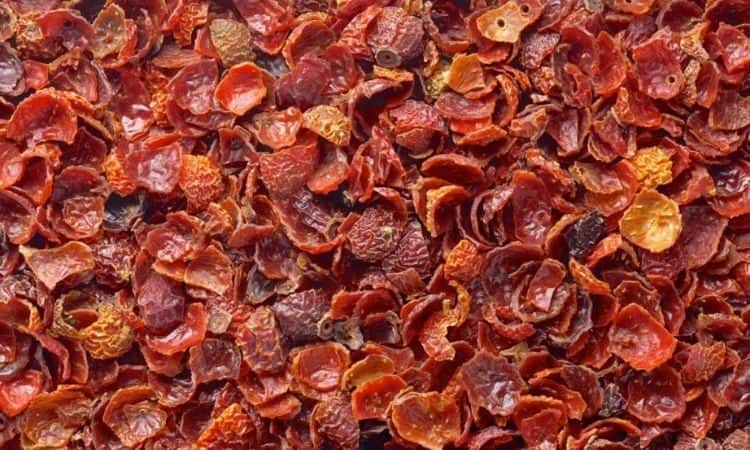
Delicious recipes and possibilities of consumption are many. In addition to rosehip puree and jam, liqueurs and fruit wines are also very popular. But rose hips can also be used for savory dishes.
Simmer one kilogram of pitted rose hips for about 90 minutes with 5.29 oz of diced onions, 3,5 oz of raisins, and 4.25 oz of wine vinegar to make wonderful rose hip chutney. Spices such as cinnamon, cloves, mustard seeds, and coriander round out the flavor of the chutney.
You can also easily dry pitted rose hips. If you do not have enough space or patience for air-drying the fruit, you can bring up drying equipment or the oven.
However, make sure that the drying temperature remains below 104 °F to preserve the ingredients. Dried rose hips can be kept for many months if stored in a cool, dry, and dark place.
They are suitable as a healthy snack for in between meals or can be used to prepare rosehip tea. For the right strength of the tea, you should let it steep for about eight minutes. But don’t be surprised: Rosehip tea does not turn red, but remains quite colorless.
